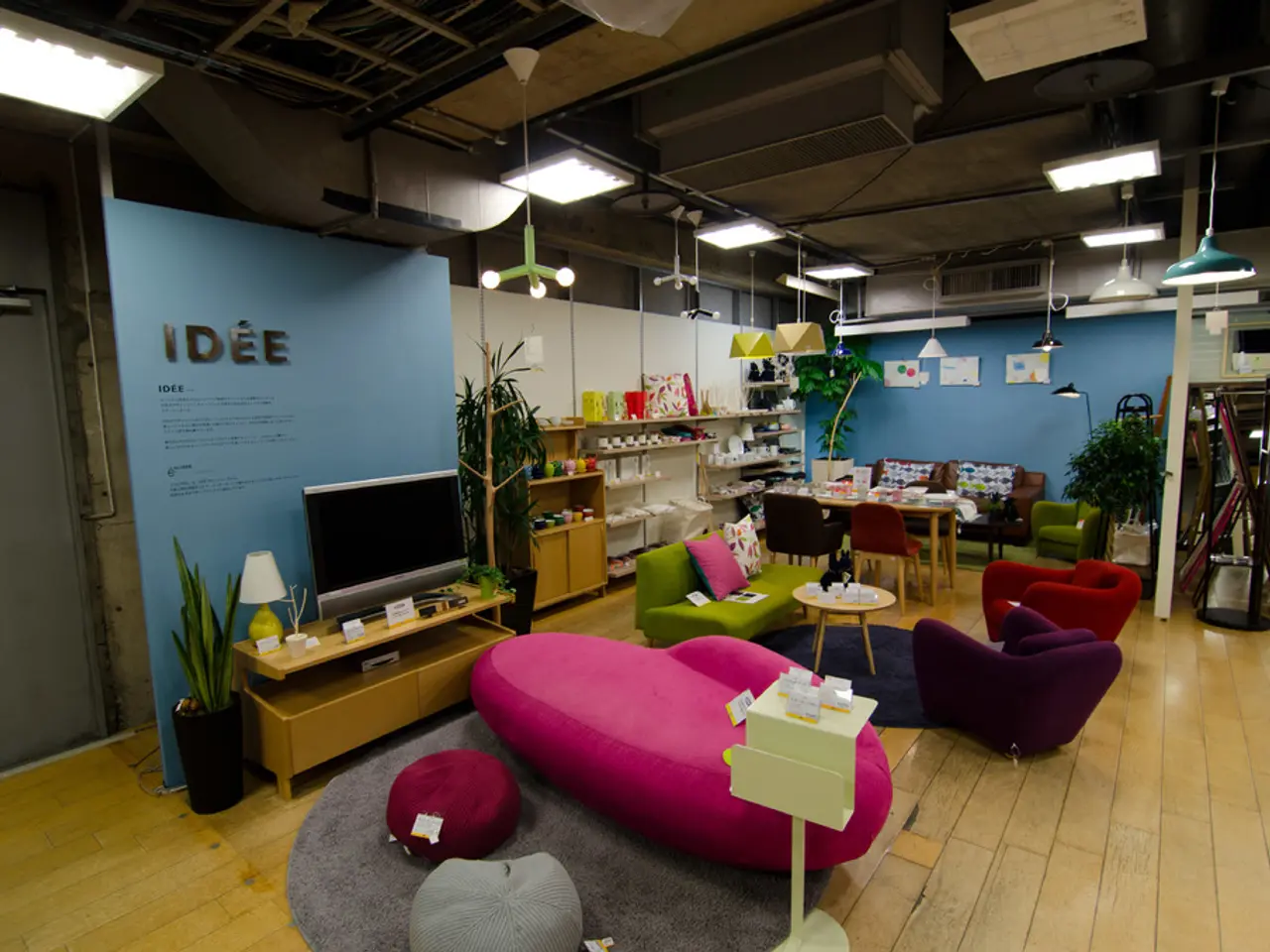Sensory Bins Inspired by Nature for Educational Exploration and Awe-Inspiring Discovery
Nature-based sensory bins are becoming a popular and engaging tool for early childhood education, offering numerous benefits for young learners. These bins, designed to stimulate the senses and promote exploration, are filled with a variety of natural elements that children can touch, see, and interact with.
The bins are carefully curated to represent geological diversity, featuring multicoloured pebbles such as granite slate, jasper, and quartz. To mimic the flow of a stream, textured craft foam cut into wave patterns is used to create "rapids," while clear plastic tubes filled with blue-tinted water simulate stream channels.
Sensory bins are not just about tactile exploration. They also encourage prediction, investigation, and conclusion-drawing skills. Activities like watching seeds float versus sink introduce basic physics concepts, while a small submersible pump creates gentle flowing sounds. Rain sticks or sensory bottles filled with rice are included to simulate authentic rain sounds, and a hand-operated water wheel is installed to demonstrate water movement and energy concepts.
Natural items like dandelion heads, milkweed pods, and maple seeds are used to show how wind disperses seeds. Pinwheels, small flags, and paper streamers are included to demonstrate wind direction and strength. Simple tools like straws and handheld fans are added to let children create their own wind experiments.
The hands-on nature of sensory bins strengthens essential fine motor abilities. Rocks ranging from 1.5 to 4 inches are selected for safe handling and texture exploration. Larger rocks are arranged to create natural barriers and pools mimicking actual stream formations.
Safety is a top priority when it comes to sensory bins. Always monitor children during sensory play, especially with small natural items, to prevent choking hazards. Check sensory bin materials weekly for signs of mold, moisture damage, or deterioration. Test new natural materials for potential allergic reactions and establish hand-washing routines before and after sensory play.
Sanitize natural materials before use by washing them with mild soap, rinsing thoroughly, then sun-drying. Store natural items in mesh bags and rinse with a mild soap solution every 2-3 weeks. Keep dry materials like seeds and pebbles in airtight containers.
Nature-based sensory bins offer an opportunity to transform everyday learning into magical discovery moments for children. They enhance fine motor skills, promote creative and imaginative play, and support early science learning concepts. These bins encourage language development as children describe what they see and feel, and support critical thinking through sorting, comparing, and questioning activities.
Moreover, they aid emotional regulation and self-regulation by engaging children with calming natural textures, making them effective tools for focus and grounding. They also foster ecological awareness and appreciation for the outdoors, serving as gateways to sensory integration and creativity in a hands-on learning context suitable for young children.
Sensory play, including nature sensory bins, builds neural connections that underpin learning, memory, and language development by allowing children to engage multiple senses simultaneously. This reinforces concepts like texture, size, and cause-and-effect, supporting cognitive growth and preparing children for school readiness. Such sensory experiences also support social-emotional skills and inclusive learning, as they accommodate diverse developmental needs and encourage active, exploratory learning rather than passive reception.
In conclusion, the commitment to safety, proper maintenance, and thoughtful material selection ensures these sensory experiences remain both educational and engaging. By organising seasonal rotations of sensory materials, educators can maintain the freshness and excitement of these learning stations, making them a valuable addition to any early childhood learning environment.
[1] [Reference 1] [2] [Reference 2] [3] [Reference 3]
- The nature-based sensory bins incorporated in early childhood education are thoughtfully designed to represent diverse environmental elements, such as environmental-science concepts like geological diversity and ecological awareness.
- These sensory bins go beyond just tactile exploration; they also stimulate prediction, investigation, and conclusion-drawing skills, as demonstrated by activities like watching seeds float or sink.
- Fashion-and-beauty and food-and-drink can be integrated into these educational bins by using items like rain sticks or sensory bottles for captivating and realistic sounds of nature, enhancing the overall learning experience.
- Sensory play, including nature-based bins, is essential for promoting a balanced lifestyle, as it strengthens essential fine motor abilities, supports early science learning, encourages language development, and fosters emotional and social-emotional skills, preparing children holistically for academic success.




